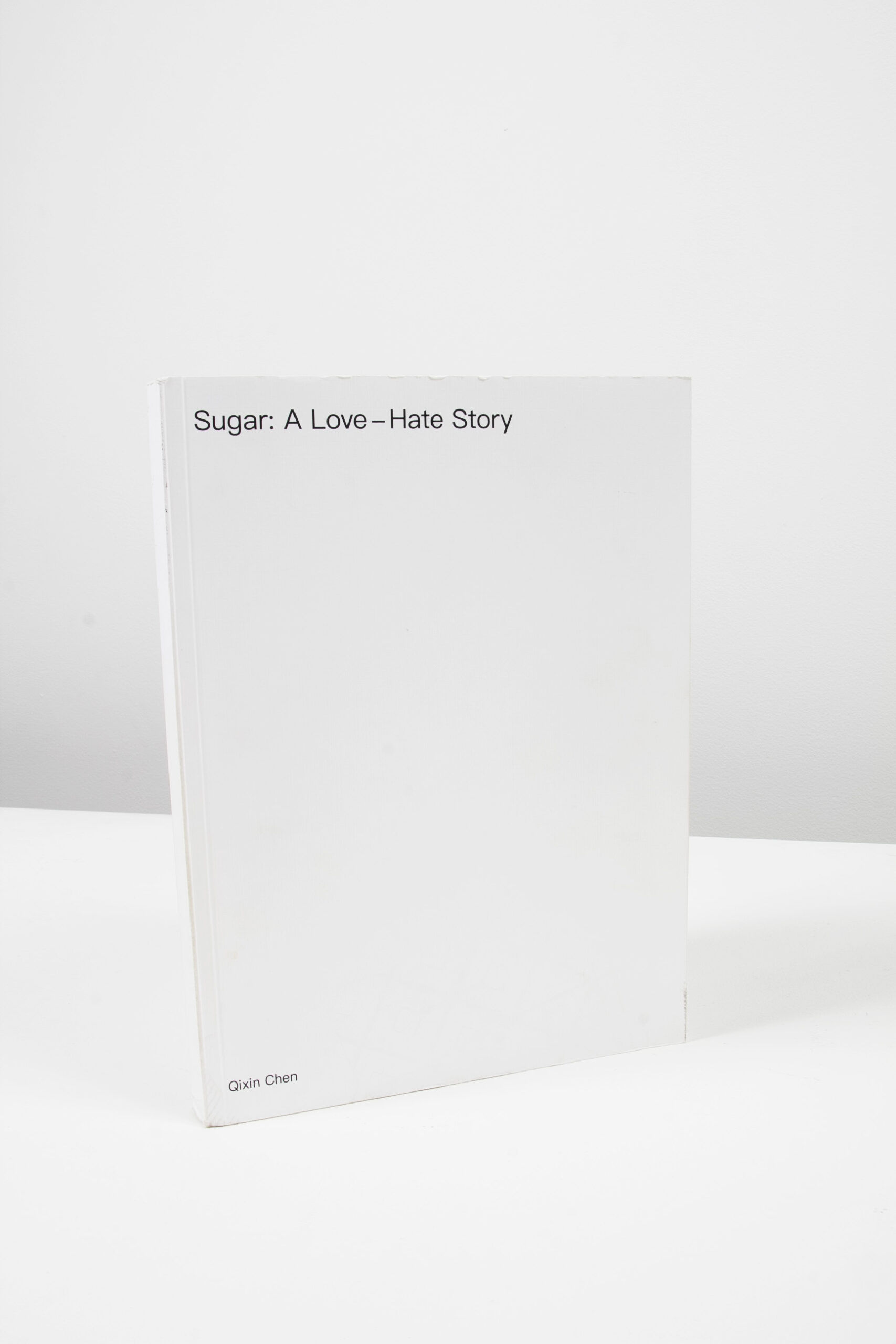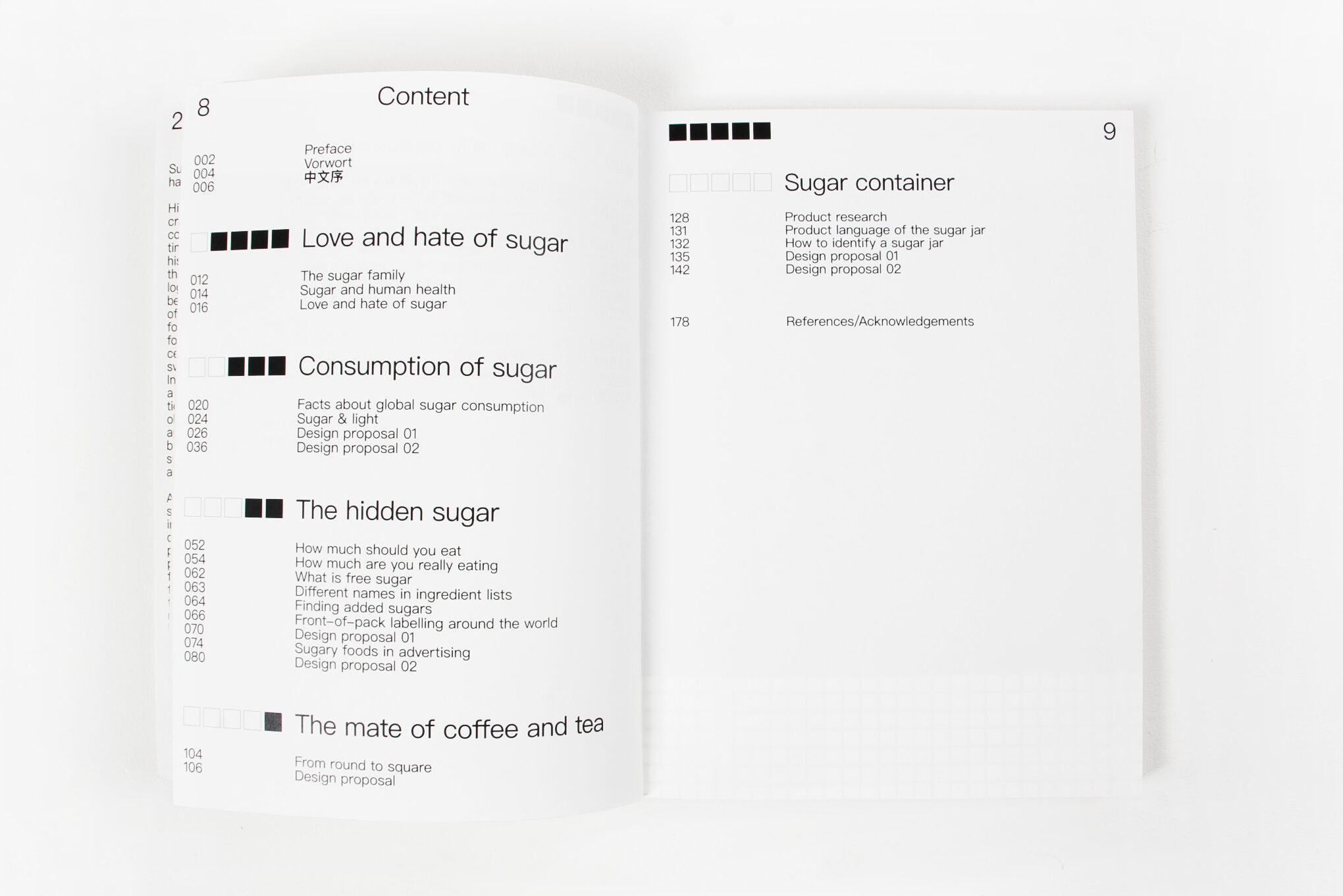
The incidence of obesity and diabetes is generally increasing worldwide. Studies have shown that this is directly related to the excessive amounts of added sugars in the modern diet. As a result, the World Health Organization has made a recommendation that the daily intake of free sugars be 10% of energy intake, i.e., no more than about 50 grams for adults and 25 grams for children in a 2,000-calorie diet. Sugar is one of the main sources of energy for humans and the brain and has a major impact on many aspects of our lives. Humans have had a sweet tooth since birth, but consuming too much sugar can be harmful. We have a relationship with sugar that is both mundane and special, loved and hated. This project is my diplom graduation project, which was composed of 4 parts. The first part is about facts and statistics to visualize our current sugar consumption. The second part of the project is about finding the causes of this sugar consumption and making the sugar content transparent. In the third and fourth part, possible solutions to reduce sugar consumption are presented through the design of sugar cubes and sugar bowls. The whole research and creative process of the project are documented in the form of a documentation. Book design by @Richard Parmentier and @Miriam Häfele.
Love and hate of sugar
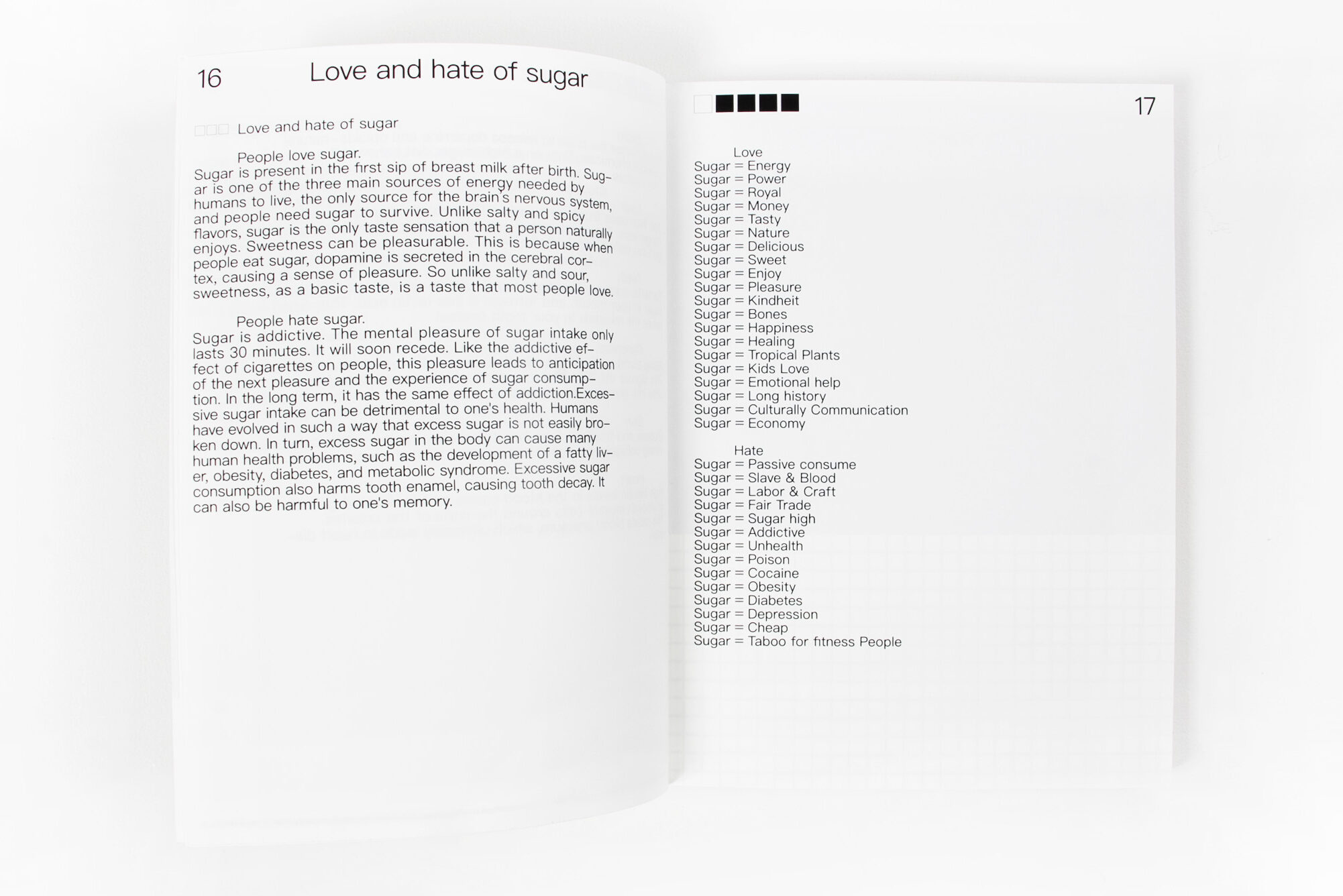
Consumption of sugar
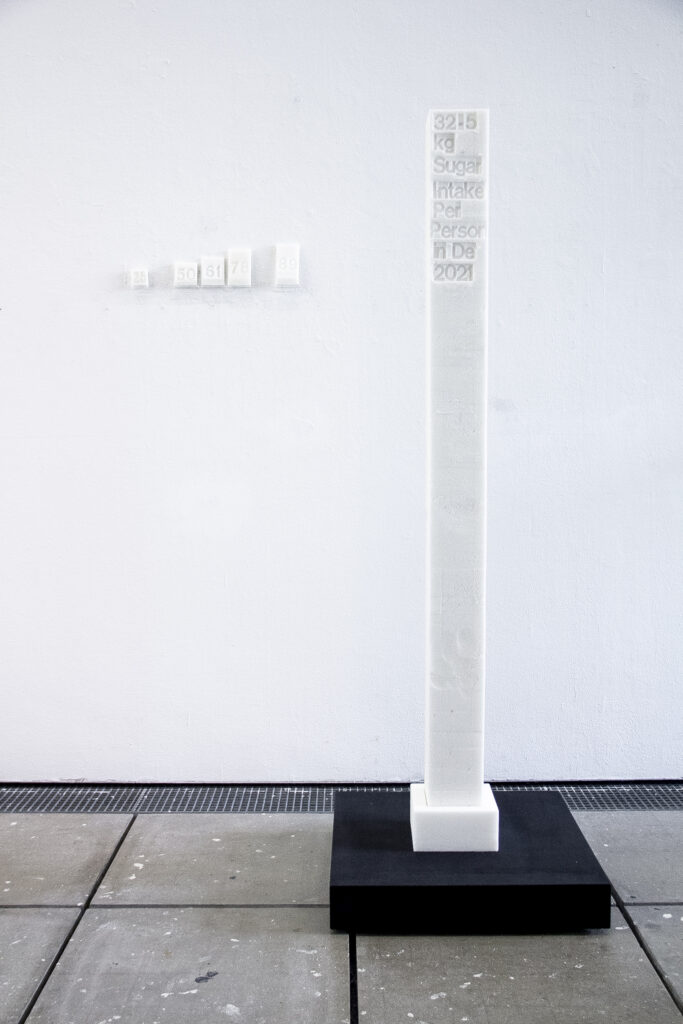
Objects made of sugar visualized the facts and statistics of current sugar consumption.

The first group of objects reflects the daily sugar consumption of people. They are 1 cm thick sugar bricks made of a corresponding amount of sugar. The printed numbers on it show its grams. By comparing the size of the sugar bricks, it is possible to compare the amount of sugar we consume in excess. The following data were determined. 1. WHO recommended the free sugar intake for children is no more than 25g per day. 2. WHO recommended free sugar intake for adults is no more than 50g per day. 3. The estimation of free sugar intake for women in Germany is 61g per day. 4. The estimation of free sugar intake for men in Germany is 78g per day. 5. The total sugar intake in Germany is 89g per person per day. Typography is from @ abk_typelab. Font: Lunze Jugo, 8 cicero.
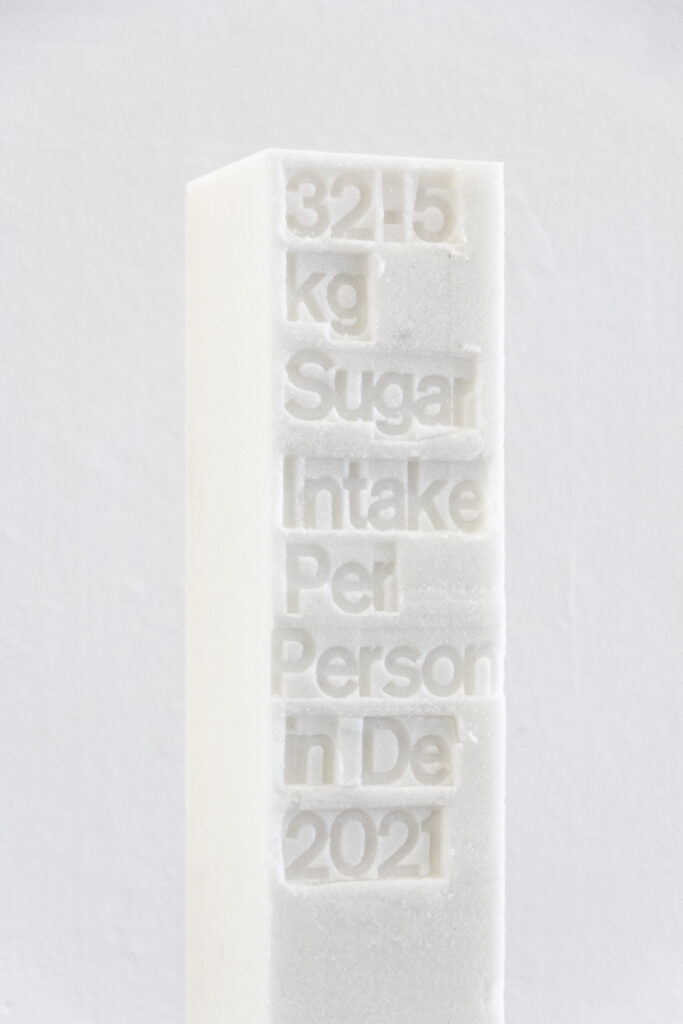
The second object shows the sugar intake of Germans in 2021. A monument was cast with the weight of the consumed sugar, namely 32.5 kg. The Monument consists of a column and a base. The total weight is 32.5 kg and the height – is 167 cm. The column has a cross-section four by 1 cm thick 50g sugar block. That is, 200 g of weight per centimeter of the body. The column is engraved with the words “32.5 kg of sugar per person by 2021”. Typography is from @ abk_typelab. Font: Lunze Jugo, 8 cicero.
The hidden sugar
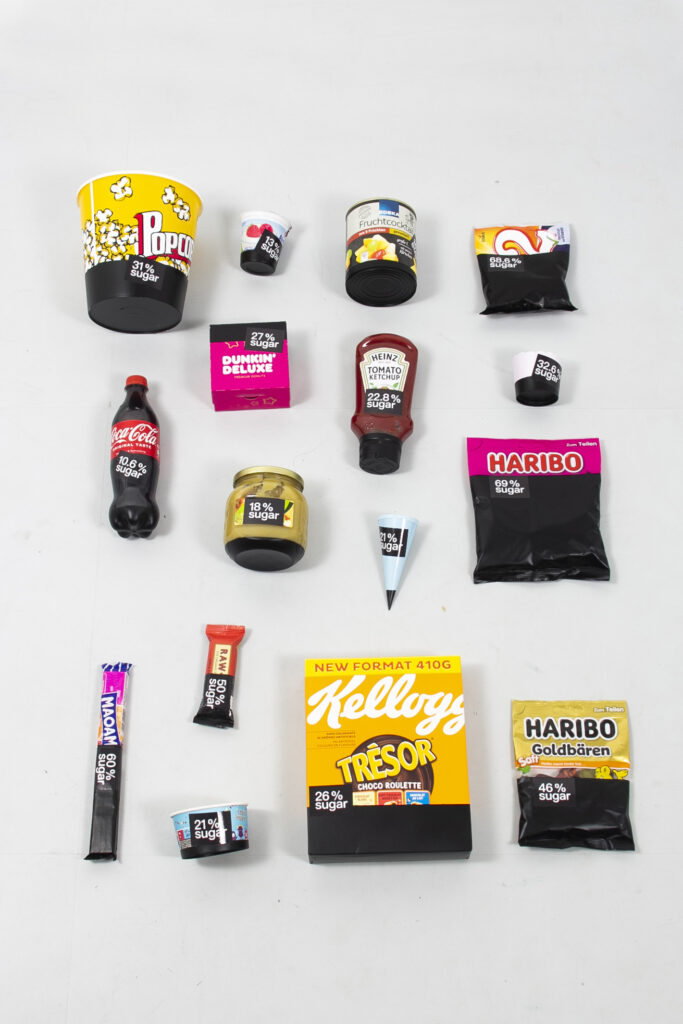
This part of the project reveals the sugar content of common high sugar products in our lives. As a critical label design, black labels are used to conceal colorful advertisements meant to criticize the glorification of sugar advertising for the impression of high sugar content foods. How high is the sugar content of the food and how much of the advertising package is to be covered. The label design for this section is a collaboration with graphic designers @Richard Parmentier and @Miriam Häfele. The label is divided into two part, on the front and back of the package. The front of label shows the amount of total sugar per 100g/100ml. The label on the back shows the amount of added sugar and the percentage daily value, which refers to the WHO recommendation on sugar intake. For products containing sugar substitutes, the label is indicated by the words faux sugar. For street food, the label is applied to cutlery or packages.
Sugar container
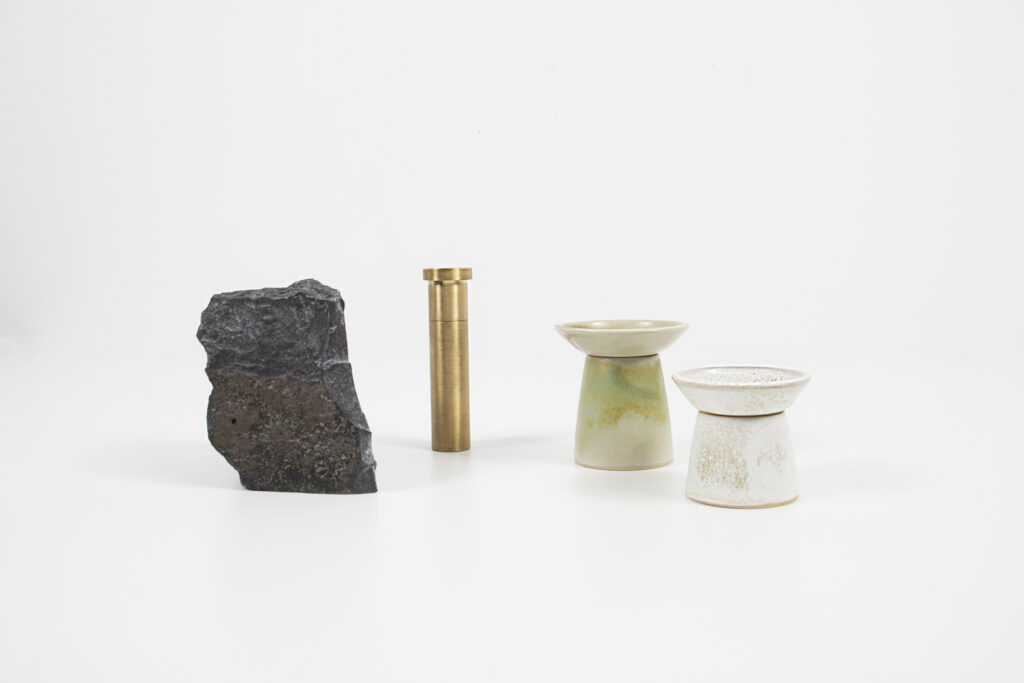
As creative solutions for helping conscious consumption of sugar, three sugar containers for different types of sugar are designed.


The Sacros is a container of sugar made of brass with a capacity of 50 grams, which can be carried around. We all come sometimes in such “emergency situations” indenden we for our concentration, etc some energy/sugar. The inner volume of the sugar bowl is limited to 50 grams of sugar, which is the recommended amount of sugar a person should consume per day. The design is meant to bring to the forefront the value as well as the danger posed by sugar. Design by @Qixin Chen, Modelling by @Sebastian Lotz


Taki is a pedestal made of black basalt and designed to display the crystal sugar. Crystal sugar, because of its diamond-like appearance, it attracts a lot of attention. The material …stone forms a platform for the sugar crystal. The raw form of the material makes the sugar look like a diamond. The material tells a long story, has something of eternity and should reflect the long history of sugar and the original effort of sugar production. To position the sugar crystal, a small hemisphere was milled out and polished. The number of grooves helps to limit the amount of sugar. Design and Modeling by @Qixin Chen



Corro is a set of sugar jars made of ceramic. One of them is glazed with antique green and terracotta yellow. The other is glazed with a beige glaze. The sugar jar consists of two parts, a base for the tray that holds the sugar to a certain height. The size of the small tray limits the amount of sugar. The hand-turned ceramic masterpieces are the finest craftsmanship and are meant to bring back the appreciation of sugar and its conscious consumption. Design by @Qixin Chen, Modelling by @Jong-Hyun Park
